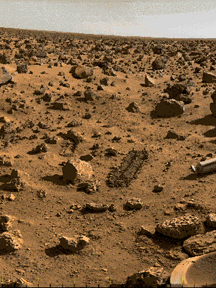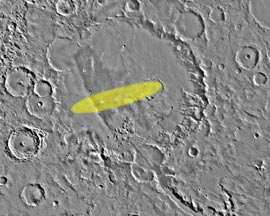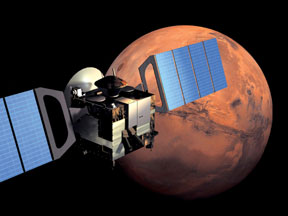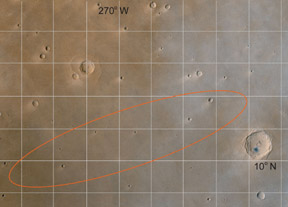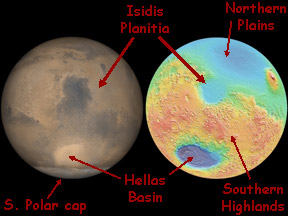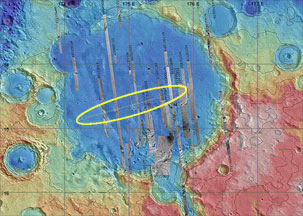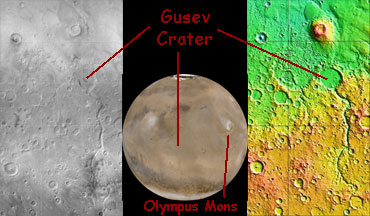Exploratour: Life on Mars?
This is a Viking image of the surface of Mars. The footpad of the Viking lander is visible in the corner of the image.
Click on image for full size
NASA
Click on image for full size
NASA
Introduction
When we ask "Where might we find extraterrestrial life", the first place many scientists turn to, because of its similarity to the Earth, is Mars. Mars is the closest analog to the Earth in both the present environment and its past. Although no signs of life on Mars have been found, scientists will continue to search because they are aware of the potential for life in extreme environments. Use the navigation button at the top of the page to move through the tour. To go to the next page, just press the forward link on the navigation button.


